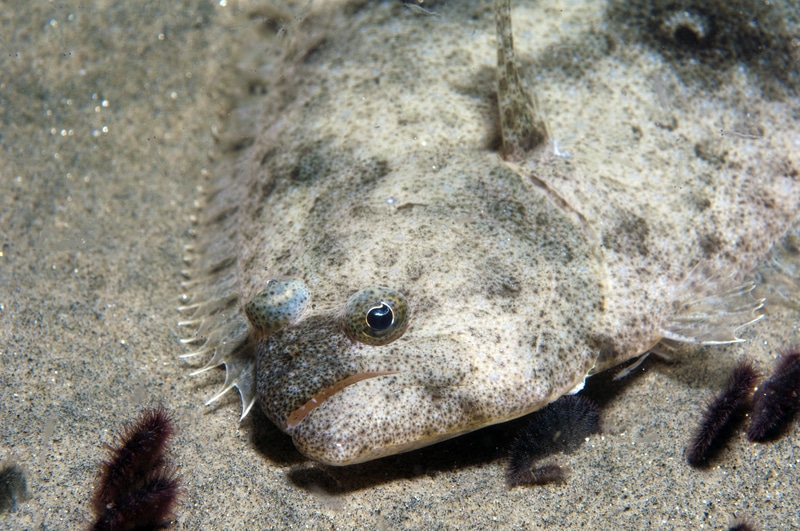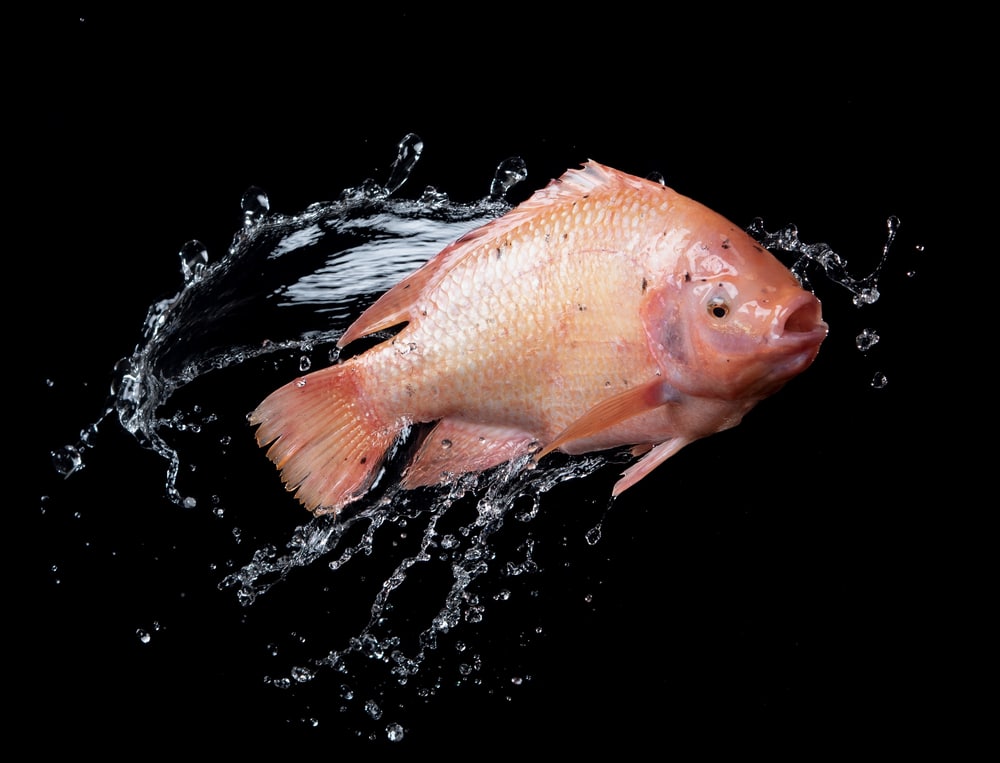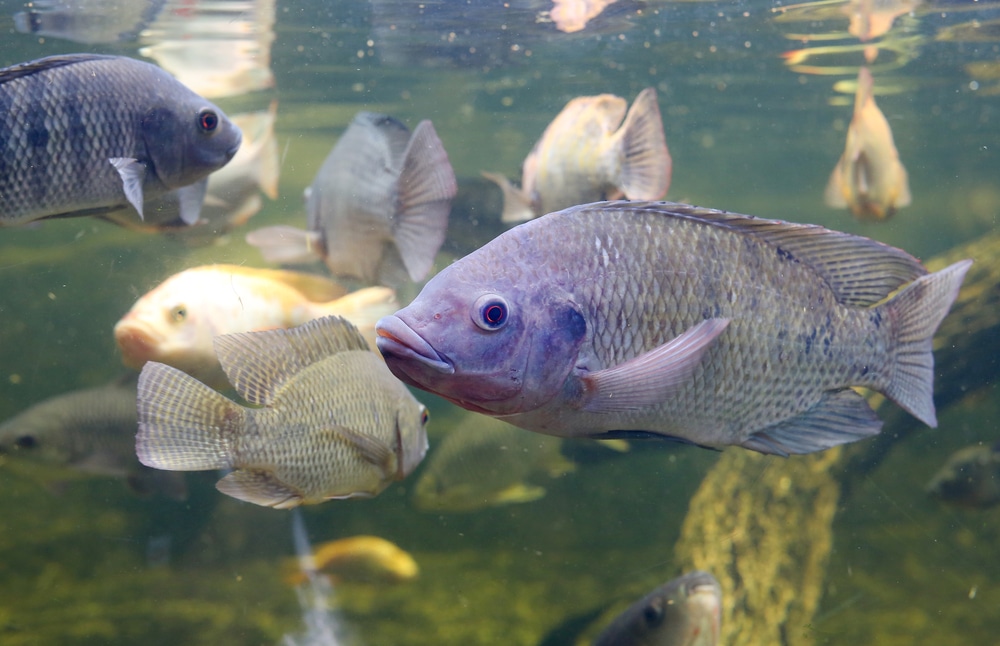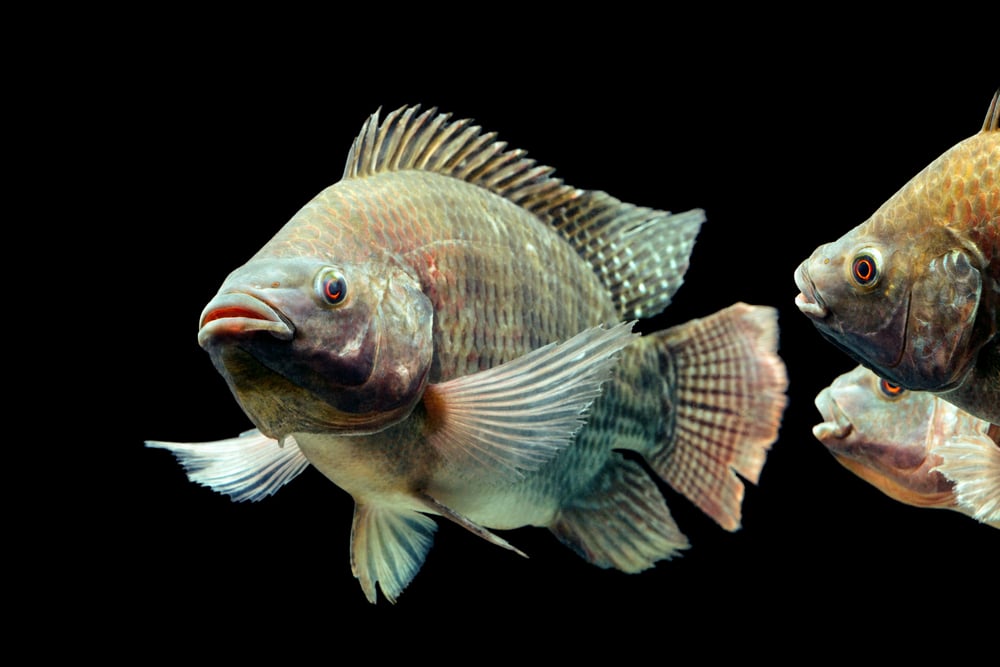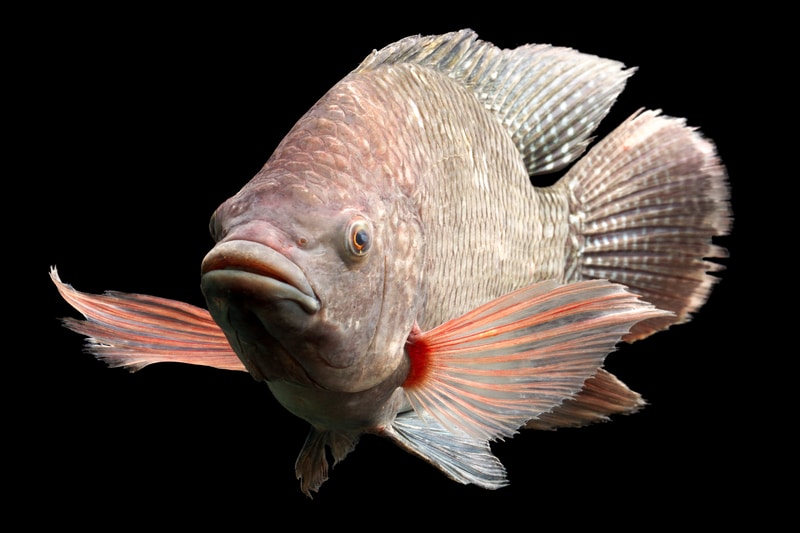
It is always good practice to inquire about where the fish was caught or farmed. This method will help you take better care of your health when relying on trusted vendors.
Many fish farms pay little to no attention to the type of contaminants in the water.
These toxins can negatively affect your health if you eat fish often. So, you should always refer to a trusted vendor and ask him about where the fish came from. Here we will cover a few points regarding Halibut vs Tilapia.
While pointing out some similarities, this information will make it easier to decide which fish you need for your diet plan.
Halibut vs Tilapia: Which Is The Better Option For You?
| Halibut | Tilapia | |
| Origin | Central Gulf of Alaska | Africa |
| Size | Large | Middle-sized |
| Price | Expensive | Reasonably priced |
| Taste and Texture | Sweet and Firm | Mild sweet and Flaky |
| Nutritional Value | High Protein | High in vitamin B-12 low on omega-3 |
| Consumption | Healthy add-on to any feast | Depends on the water from where its coming |
Halibut
Compared to Tilapia, Halibut maintains a far better reputation regarding the fish’s nutrition. It is more prominent in size and offers a similar taste to Tilapia.
These fish are raised in relatively better conditions as they don’t consume everything you throw. Most people like to fish for Halibut themselves for cooking purposes.
So, as long as you’re getting your Halibut from a natural environment or a sanitary farm, it shouldn’t be an issue to add Halibut as a part of your diet.
The main difference between Halibut and Tilapia is the nutrient content. From calories and fat to protein and water, a Halibut offers substantially more nutrients when compared with the same serving size of Tilapia.
Halibut has a higher vitamin D, monounsaturated fat, and vitamin B6 nutritional value.
However, with these increased benefits, you will also notice that the price tag for this fish will be substantially more than for Tilapia. Here people think that the increased price tag is unjustified because the taste of Halibut is quite similar to Tilapia.
Both of these fish bring light and consistent texture to your recipe. However, in almost all cases, experts recommend Halibut over Tilapia because of its health benefits. If you’re not struggling with a budget issue, then going for Halibut is your best option.
Otherwise, you can always go for Tilapia, as it is widely available in the market. You only need to ensure where the Tilapia is coming from. That way, you can determine whether you should include Tilapia in your diet.
Regarding the shape and size, there is a substantial difference between Tilapia and Halibut. A Halibut has a broader build and a dark color, while Tilapia is relatively longer in size. It isn’t a shallow-water fish and can be harder to fish than Tilapia.
Tilapia
Moving on with our Halibut vs. Tilapia guide, the Tilapia is one of the most infamous fish you can find in the market. This is because many of these fish come from farms.
So, if you’re unsure about where your Tilapia is coming from, it would be best to stay away. The ratio of omega-six to omega-three in this fish is also unstable and can cause several inflammatory issues in your body.
Tilapia, compared to Halibut, only contains 0.49g of monounsaturated fats, whereas Halibut has almost 8.37g of monounsaturated fat. Tilapia has less saturated fat and is richer in vitamins like B3 and B12.
The environment is muddy and unhygienic in which Tilapias are raised, which overcomes the overall health benefits of the fish as it causes more harm if consumed regularly. So, if you’re suffering from some specific condition, Tilapia is not for you.
Even though the cheaper price tag might influence your decision, saving a few bucks is not worth harming your health. Many alternatives available in the market bring far more benefits to the table.
With that said, Tilapia is one of the most common fish you can find in a market. It is cheap, has a sweet, mild flavor, and offers the same flavor as Halibut and a flaky texture compared to Halibut.
However, when it comes to nutrition and health benefits, Halibut is far superior to Tilapia due to its high protein, fat, and omega -3 contents.
Many fitness experts recommend that people avoid using Tilapia in their diet as most Tilapia come from unsanitary fish farms. A wide range of chemicals and toxins are used in said farms to raise Tilapia.
So, when you consume Tilapia, the toxins enter your body and may cause issues in the long run for your health. To keep yourself healthy, avoiding Tilapia and looking towards others, adding protein to your diet would be best.
Overall, the taste of both fish is quite similar, and the noticeable difference is in the shape, size, and nutrition. If you’re only concerned with the taste, then it would be harder to tell the difference between the two fish.
Aside from that, Halibut is many giants and brings several times more nutrients to the table.
Comparison Between Halibut And Tilapia Fish:
- Price
Price is one of the main distinguishing features that contrast between Halibut and Tilapia that have a similar taste and texture.
Halibut is more an expensive fish and has greater nutritional value than Tilapia, whereas Tilapia is more of a pocket-friendly option. So, if you are looking for something on the cheaper side, Tilapia should be your go-to option.
But if you’re a health fanatic, then Halibut is a great pick for you.
- Taste And Texture
Although both fish are almost the same in texture, color, and taste, they are mild and sweet in flavor, flaky in texture, and light pink to white when raw.
Some individuals find frozen Halibut a little dry and non-moist in texture when cooked compared to fresh Halibut.
Tilapia is a white flaky textured, tender, and slightly firm fish when cooked. The taste of Tilapia is defined by the atmosphere it has been raised in the water condition and food.
It is best in taste and quality when it weighs around 1 1/2 lbs.
- Consumption
Fish is among the healthiest sources of protein required by the human body to grow and maintain its muscle; Tilapia and Halibut are no exception.
Tilapia is loaded with minerals like choline, phosphorus, vitamin B12, vitamin D, selenium, and niacin.
However, the major disadvantage Tilapia has is its unbalanced omega 3 and omega 6 fatty acids content which can be dangerous for the body if consumed more than required.
So, if you’re looking for a protein source rich in vitamin D and B12 and pocket-friendly, Tilapia is a great option.
Whereas Halibut is also a great pick, it has magnesium, vitamin B3, omega -3 and selenium which are great for maintaining your heart health.
Not only does it aid in improving your heart health, but it also aids in protecting your skin from toxic sun rays.
So, if your budget is not restrained, Halibut is a great option.
- Nutritional Value
Halibut is a high source of protein, and vitamin D. Presence of 1097 IU of vitamin D in Halibut makes it one of the best healthy diets for growing children and adults, as the vitamin is not only great for bones and skin but also for general health.
Tilapia in contrast is low in vitamin D. Furthermore, Halibut is rich in omega 3 fatty acids, whereas Tilapia has a higher omega 6 to omega 3 ratio, which is fairly not healthy.
The nutritional value also depends on the water the fish is caught in. For instance, wild Tilapias usually come from contaminated and crowded water, which makes them comparatively less healthy than freshwater Halibut.
- Size
Tilapia and Halibut are tender, firm, and pink fish, relatively the same in their taste, having a distinguishing feature of their weight and size, making them fall out from each other, mostly found in the central Gulf of Alaska and Africa.
The largest Halibut found can be 8 feet long with a width of 5 feet. An average male Halibut can weigh around 6o lbs, whereas an average female Halibut can weigh around 600 lbs.
If the water temperature is suitable, around or above 50 degrees, the Tilapia fish can grow up to half a pound in 6 months, weighing a maximum of around 5 pounds. Tilapia raised in ponds can weigh around half a kg to 6-7 kg.
Conclusion
Both fish possess great nutritional value. They are widely available in the consumption market. Each has its benefits and disadvantages.
If you’re looking for a protein source that is also high in Vitamin D, which is rarely high in any foods, Halibut is a great pick. Halibut, although expensive, still has greater health benefits and is more hygienic and safe for consumption than Tilapia.
However, if you are low on budget, Tilapia is also a good option with nutritional content if you get it from a clean water source.

